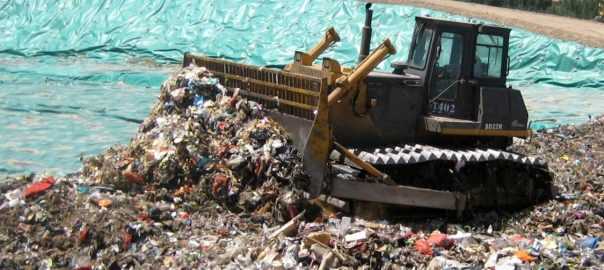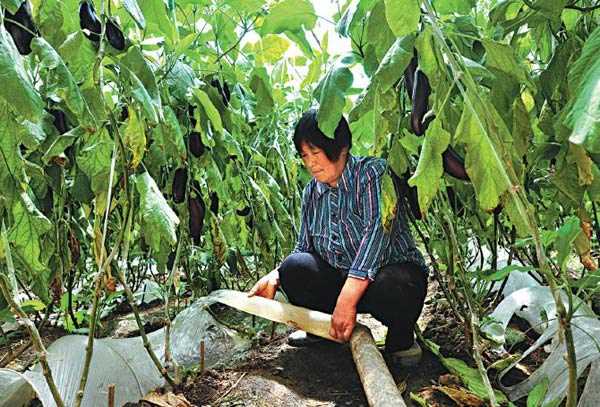
China, with its vast population, faces enormous challenges when it comes to managing human waste. The country has made significant strides in recent years to address this issue and has implemented innovative solutions to deal with the increasing amount of waste generated by its citizens.
One of the main strategies employed by China is the construction of large-scale wastewater treatment plants that can handle the massive volumes of sewage produced by its urban centers. These plants use advanced technologies to treat the wastewater and remove harmful pollutants before releasing it back into the environment. This not only helps to protect the health of the population but also improves water quality in rivers and lakes.
In addition to wastewater treatment plants, China has also invested heavily in the development of composting and anaerobic digestion facilities. These facilities utilize organic waste, including human feces, to produce biogas and compost. The biogas can be used as a renewable energy source, while the compost can be used as a fertilizer to improve soil quality.
Furthermore, China has implemented various measures to promote responsible waste management at the individual level. This includes the construction of public toilets equipped with advanced waste disposal systems, as well as educational campaigns to raise awareness about the importance of proper waste disposal. These initiatives aim to reduce the amount of untreated waste that goes into the environment and to encourage sustainable practices among the population.
Overall, China is taking proactive steps to address the challenges posed by human waste. Through the construction of wastewater treatment plants, the development of composting and anaerobic digestion facilities, and the promotion of responsible waste management practices, the country is working towards a cleaner and more sustainable future.
- China’s Approach to Human Waste: Innovative Solutions for Sustainable Management
- 1. Improved Sanitation Infrastructure
- 2. Implementation of Eco-Toilets
- 3. Waste-to-Energy Conversion
- 4. Public Education and Awareness
- Strategies for Urban Sanitation
- Treatment and Recycling Technologies
- Circular Economy and Resource Recovery
- Resource Recovery Technologies
- Circular Economy Approach
- Rural Sanitation Initiatives
- Sustainable Waste Management Systems
- Collaborative Efforts
- Public Health and Environmental Impacts
- International Collaboration and Best Practices
- Q&A
- What are the ways China manages human waste?
- Does China use any innovative methods to deal with human waste?
- What are the environmental impacts of China’s management of human waste?
- How does China ensure the safe disposal of human waste?
- What are the challenges faced by China in managing human waste?
China’s Approach to Human Waste: Innovative Solutions for Sustainable Management
China, as the world’s most populous country, faces unique challenges when it comes to managing human waste. Ensuring proper sanitation and waste management practices is crucial for public health and environmental sustainability. To address these challenges, China has implemented a range of innovative solutions that prioritize sustainable management of human waste.
1. Improved Sanitation Infrastructure
China has made significant investments in improving sanitation infrastructure, particularly in rural areas. The government has implemented projects to construct toilets and septic tanks, ensuring that communities have access to safe and hygienic sanitation facilities. This has not only improved public health but also prevented the contamination of water sources and the spread of diseases.
2. Implementation of Eco-Toilets
China has been at the forefront of developing eco-toilets, which are designed to minimize the environmental impact of human waste. These toilets use innovative technologies to treat and recycle waste. For instance, some eco-toilets use anaerobic digestion to convert human waste into biogas, which can be used for cooking and heating. Others utilize filtration and composting processes to produce nutrient-rich compost that can be used as fertilizer.
Eco-toilets have been widely implemented in rural areas, where access to traditional sewage systems may be limited. They have not only improved sanitation but have also contributed to sustainable agriculture and reduced dependence on chemical fertilizers.
3. Waste-to-Energy Conversion
China has also embraced waste-to-energy conversion as a method of managing human waste. This approach involves using advanced technologies to convert human waste into energy, such as biogas or electricity. Large-scale waste-to-energy plants have been constructed in urban areas, utilizing anaerobic digestion or incineration to generate power. By harnessing the energy potential of human waste, China is reducing its reliance on fossil fuels and contributing to its renewable energy goals.
4. Public Education and Awareness
In addition to implementing innovative technologies, China recognizes the importance of public education and awareness in promoting sustainable waste management practices. The government has launched campaigns to raise awareness about proper sanitation, waste separation, and the benefits of eco-friendly toilets. By educating the public, China is fostering a culture of responsible waste management and encouraging individuals to actively participate in sustainable practices.
In conclusion, China has adopted a multi-faceted approach to human waste management, incorporating infrastructure development, eco-toilet implementation, waste-to-energy conversion, and public education. These innovative solutions have not only improved sanitation and public health but have also contributed to the country’s overall sustainability goals.
Strategies for Urban Sanitation
Ensuring proper sanitation in urban areas is crucial for the overall health and well-being of the population. In China, the government has implemented several strategies to address the issue of human waste management in cities.
1. Improved Wastewater Treatment: One of the primary strategies is the development and improvement of wastewater treatment facilities. The government has invested heavily in upgrading existing infrastructure and building new treatment plants to increase the capacity and efficiency of treating and disposing of wastewater.
2. Sewerage System Expansion: The expansion of sewerage systems plays a significant role in improving urban sanitation. China has been working towards providing universal access to sewerage facilities by extending the network and connecting more households and buildings to the system. This helps in proper collection and conveyance of human waste to treatment plants.
3. On-Site Sanitation Solutions: In areas where it is not feasible to extend sewerage networks, the government promotes on-site sanitation solutions such as septic tanks and pit latrines. These systems effectively capture and treat human waste at the source, preventing contamination of the environment and ensuring public health.
4. Public Awareness and Education: The government also emphasizes the importance of public awareness and education regarding proper sanitation practices. Through campaigns and educational programs, the population is educated on the proper use of toilets, handling of human waste, and the benefits of hygienic practices. This helps in changing behavior and ensures that urban areas remain clean and free from waste-related diseases.
5. Recycling and Resource Recovery: China focuses on the recycling and resource recovery of human waste to minimize environmental impact. Advanced technologies are used to extract valuable resources such as biogas and fertilizer from wastewater and sewage sludge. This not only reduces pollution but also generates additional revenue and promotes sustainable development.
By implementing these strategies, China aims to improve urban sanitation and create healthier living environments for its citizens. The combination of better wastewater treatment, expanded sewerage systems, on-site sanitation solutions, public education, and resource recovery ensures the proper management of human waste, reducing environmental pollution and improving public health.
Treatment and Recycling Technologies
In China, there are various treatment and recycling technologies employed to manage human waste in an efficient and sustainable manner. These technologies ensure that the waste is properly processed and its harmful effects on the environment are minimized.
One of the commonly used treatment technologies in China is the anaerobic digestion process. In this process, organic waste, including human waste, is broken down by microorganisms in the absence of oxygen. This produces biogas and biofertilizer. The biogas can be used as a source of renewable energy, while the biofertilizer can be used to enrich agricultural soils, reducing the need for chemical fertilizers.
Another technology that is often utilized is the composting process. Organic waste, including human waste, is mixed with bulking agents, such as sawdust or agricultural waste, and allowed to decompose in a controlled environment. The compost produced can be used as a soil amendment, improving soil quality and fertility.
Additionally, China has also implemented wastewater treatment plants to treat sewage and other liquid waste. These plants use various techniques, such as physical, chemical, and biological processes, to remove impurities and contaminants from the wastewater. The treated water can then be reused for irrigation or discharged safely into water bodies, reducing pollution and conserving water resources.
Furthermore, China has been exploring innovative technologies like urine separation and treatment. By separating urine from the rest of the wastewater, it can be treated separately and used as a valuable source of nutrients for agricultural purposes.
Overall, China’s treatment and recycling technologies play a crucial role in managing human waste effectively, contributing to sustainable development and environmental protection.
Circular Economy and Resource Recovery
In the context of managing human waste, China has adopted a circular economy approach that focuses on resource recovery. The aim is to minimize waste and maximize the utilization of valuable resources that can be extracted from human waste. This approach aligns with China’s broader goal of transitioning to a more sustainable and environmentally-friendly society.
Resource Recovery Technologies
China has implemented various resource recovery technologies to harness the potential of human waste. One such technology is anaerobic digestion, which involves breaking down organic waste in a controlled environment without the presence of oxygen. This process produces biogas, a renewable energy source that can be used for electricity generation or as a substitute for natural gas.
Another resource recovery technology used in China is composting. Organic waste, such as food scraps and agricultural residues, is collected and processed to create nutrient-rich compost. This compost can then be utilized as a fertilizer for agricultural purposes, reducing the need for chemical fertilizers and improving soil health.
Circular Economy Approach
China’s circular economy approach to human waste management involves a closed-loop system where resources are continuously recycled and reused. This approach reduces the dependency on finite resources, minimizes waste, and mitigates the environmental impact of waste disposal.
Through the circular economy approach, China has been able to create a sustainable and efficient waste management system. It not only addresses the immediate problem of waste disposal but also offers economic and environmental benefits. The recovered resources, such as biogas and compost, contribute to the country’s energy needs and agricultural productivity.
The circular economy approach is not limited to just human waste but extends to other waste streams as well. China has been actively promoting recycling and resource recovery in industries such as electronics, plastics, and construction materials. This holistic approach aims to create a more sustainable and resource-efficient society.
Rural Sanitation Initiatives
China has made significant efforts to improve rural sanitation in recent years. The government has recognized the importance of addressing the issue of human waste management in rural areas to promote public health and environmental sustainability.
One of the key initiatives undertaken by the Chinese government is the construction of improved sanitation facilities in rural areas. This includes the installation of household toilets and the development of community sanitation centers. These facilities are designed to provide safe and hygienic disposal of human waste, reducing the risk of diseases and improving overall living conditions.
In addition to infrastructure development, the government has also implemented various educational campaigns to raise awareness about the importance of proper sanitation practices. These campaigns aim to educate rural communities about the benefits of using improved sanitation facilities and proper waste management techniques.
Sustainable Waste Management Systems

China is also actively promoting sustainable waste management systems in rural areas. One of the innovative approaches is the construction of biogas digesters. These systems convert human waste into biogas, which can be used for cooking, heating, and electricity generation.
The construction of biogas digesters not only helps to utilize human waste, but also provides an alternative energy source for rural households. This not only reduces the dependence on traditional fuels such as firewood and coal but also helps to reduce greenhouse gas emissions.
Collaborative Efforts
The Chinese government has also encouraged collaborative efforts from various stakeholders to address the issue of human waste management in rural areas. This includes partnerships with international organizations, NGOs, and private companies.
These collaborations aim to leverage expertise, resources, and funding to accelerate the implementation of sustainable sanitation initiatives. By working together, these stakeholders can make a greater impact on improving rural sanitation and promoting public health in China.
| Benefit | Description |
|---|---|
| Improved public health | Proper sanitation practices help to prevent the spread of diseases and improve overall public health in rural areas |
| Environmental sustainability | Effective waste management systems reduce environmental pollution and contribute to a cleaner and healthier environment |
| Alternative energy source | Biogas digesters convert human waste into a valuable energy source, reducing dependence on traditional fuels |
Public Health and Environmental Impacts

The management of human waste in China has significant public health and environmental impacts. Improper handling and disposal of human waste can lead to the spread of diseases and the contamination of water sources.
One of the main concerns is the impact on public health. When human waste is not properly treated or disposed of, it can carry harmful pathogens and bacteria that can cause diseases such as cholera, typhoid, and dysentery. These diseases can spread rapidly and have the potential to cause widespread outbreaks.
Additionally, the contamination of water sources is a major environmental concern. Improper disposal of human waste can lead to the contamination of rivers, lakes, and groundwater, which are sources of drinking water for many people. This can lead to the consumption of contaminated water and result in further spread of diseases.
In order to address these issues, the Chinese government has implemented various measures. They have invested in the construction of sewage treatment plants and improved sanitation infrastructure in both urban and rural areas. This has helped in reducing the direct discharge of untreated human waste into water bodies and has improved the overall management of human waste.
Furthermore, public education campaigns and awareness programs have been introduced to promote proper hygiene practices and encourage the use of toilets and sanitation facilities. These initiatives aim to change the cultural norms and behaviors surrounding the handling and disposal of human waste.
Overall, the effective management of human waste is crucial for safeguarding public health and protecting the environment. It requires a combination of infrastructure development, government policies, and public education to ensure that human waste is properly treated and disposed of in a way that minimizes the risk of disease transmission and environmental contamination.
International Collaboration and Best Practices
China has recognized the importance of international collaboration in addressing the challenges associated with human waste management. The country has actively participated in various international forums and organizations, such as the United Nations Environment Programme (UNEP) and the World Health Organization (WHO), to share knowledge and best practices.
Through these collaborations, China has learned from the experiences and practices of other countries in managing and treating human waste. This has helped the country develop innovative approaches and technologies, as well as implement effective policies and regulations.
One of the best practices that China has adopted is the use of advanced wastewater treatment technologies. These technologies are designed to remove pollutants and pathogens from human waste, ensuring that the treated water is safe for reuse or release into the environment. China has also invested in the research and development of new and more efficient treatment technologies.
Another best practice that China has implemented is the promotion of proper sanitation and hygiene practices. The government has launched public awareness campaigns to educate the population about the importance of using toilets, proper handwashing techniques, and the safe disposal of human waste.
China has also fostered collaborations with other countries to exchange knowledge and expertise. For example, the country has partnered with international organizations and universities to conduct joint research projects and training programs on human waste management.
Through international collaboration and the adoption of best practices, China aims to improve its human waste management strategies and contribute to global efforts in achieving sustainable and environmentally friendly solutions.
Q&A
What are the ways China manages human waste?
China manages human waste in multiple ways. The most common method is through the use of septic tanks and pit toilets in rural areas. In urban areas, the main method is through the use of centralized sewage treatment plants.
Does China use any innovative methods to deal with human waste?
Yes, China has been experimenting with various innovative methods to deal with human waste. One method is the use of biogas digesters, which convert human waste into biogas for cooking and heating. Another method is the use of urine-diverting toilets, where urine is collected separately and used as a fertilizer.
What are the environmental impacts of China’s management of human waste?
China’s management of human waste has both positive and negative environmental impacts. On the positive side, the use of biogas digesters and urine-diverting toilets helps reduce greenhouse gas emissions and water pollution. However, the improper disposal of human waste in some rural areas can lead to contamination of water sources and spread of diseases.
How does China ensure the safe disposal of human waste?
China has implemented various policies and regulations to ensure the safe disposal of human waste. These include the construction of sewage treatment plants, the promotion of proper sanitation practices, and the enforcement of penalties for improper waste disposal. China is also investing in research and development of new technologies to improve waste management practices.
What are the challenges faced by China in managing human waste?
China faces several challenges in managing human waste. One of the main challenges is the lack of proper sanitation facilities in rural areas, which leads to the improper disposal of waste. Another challenge is the high population density in urban areas, which puts a strain on existing sewage treatment infrastructure. Additionally, changing lifestyles and increasing tourism contribute to the growing demand for waste management solutions.